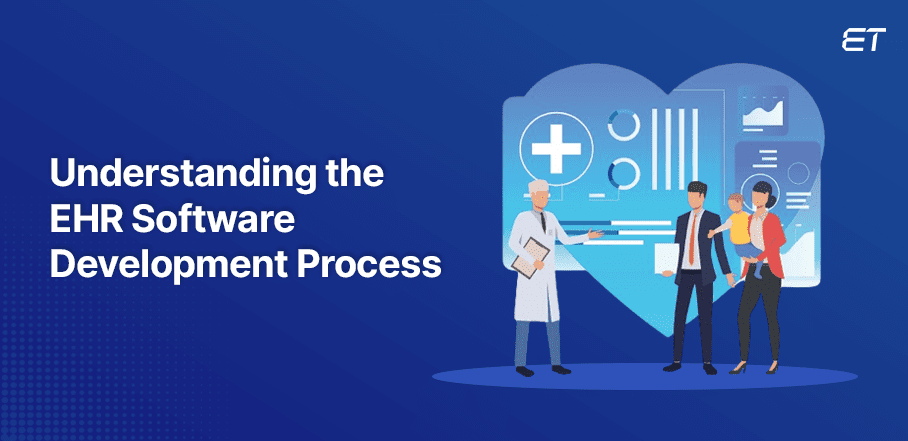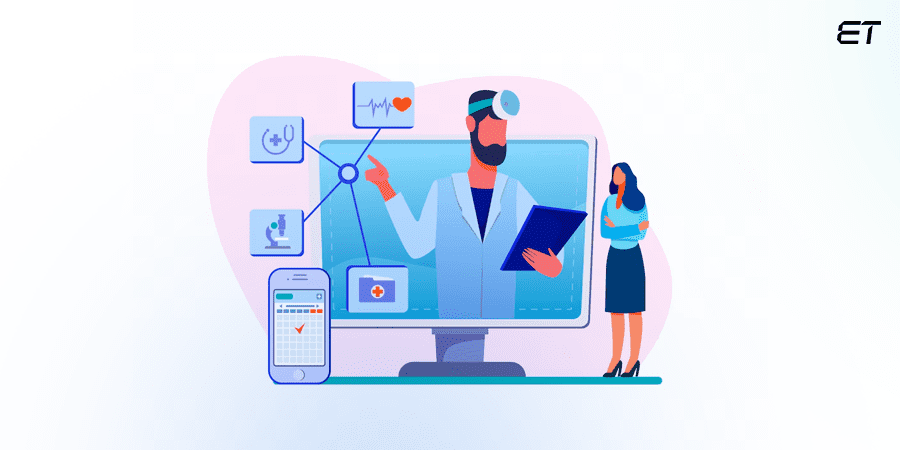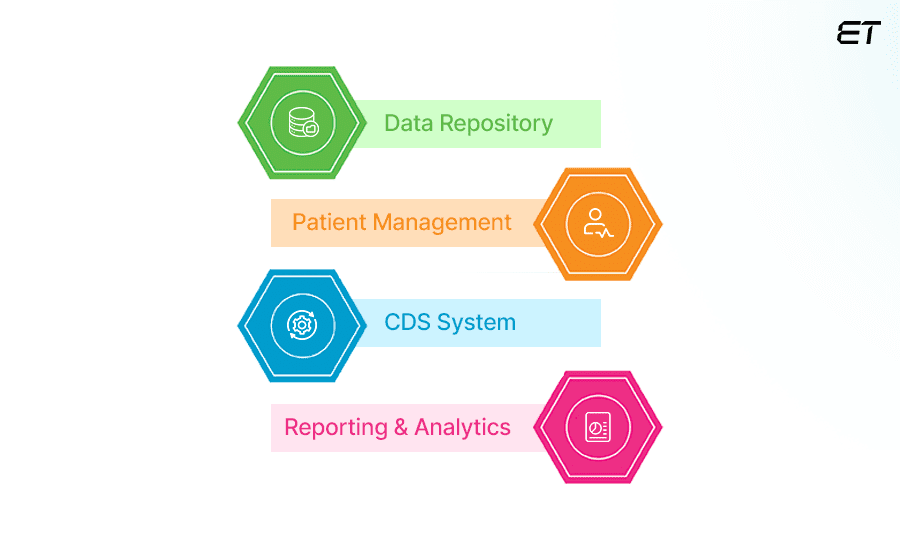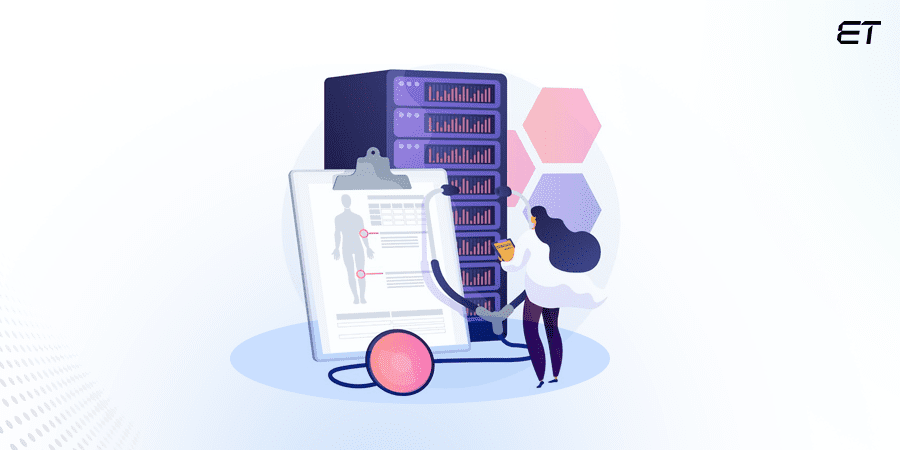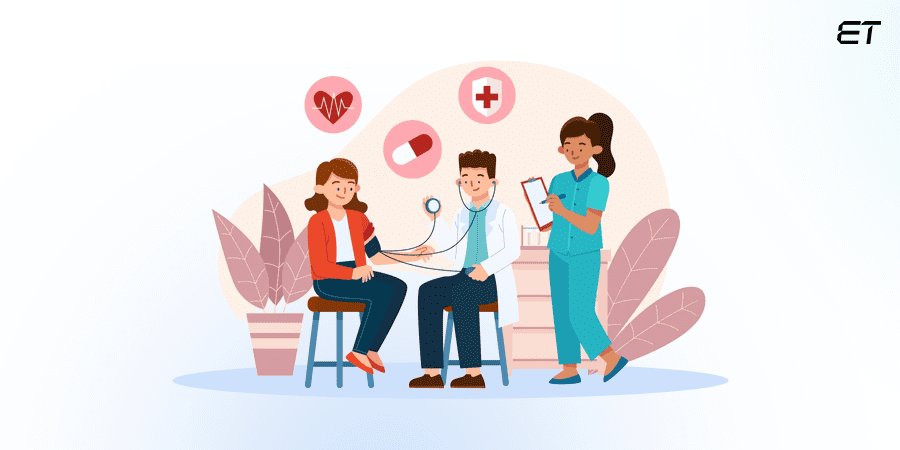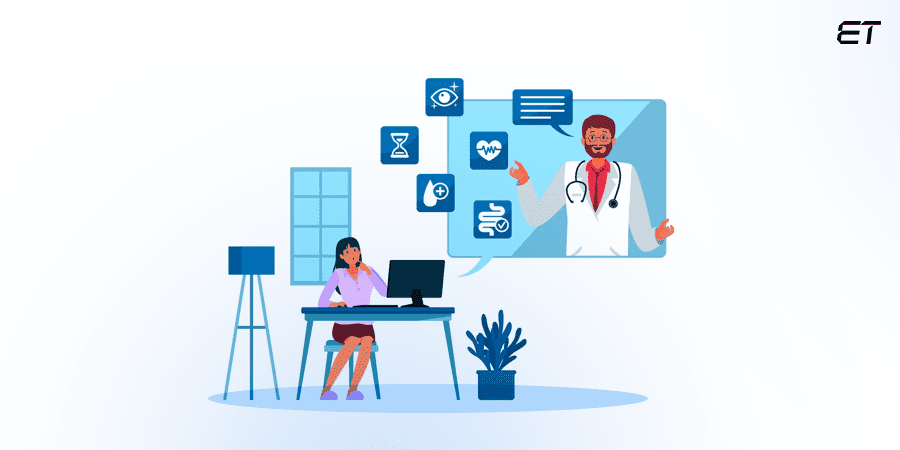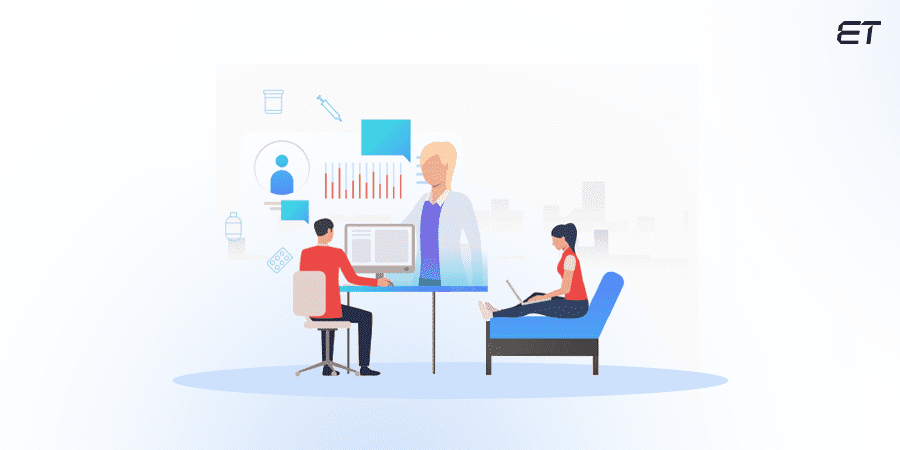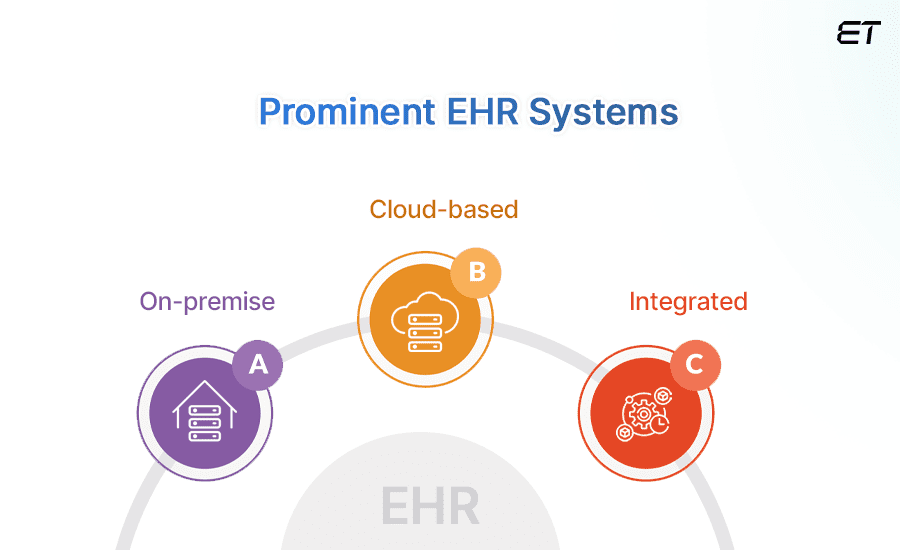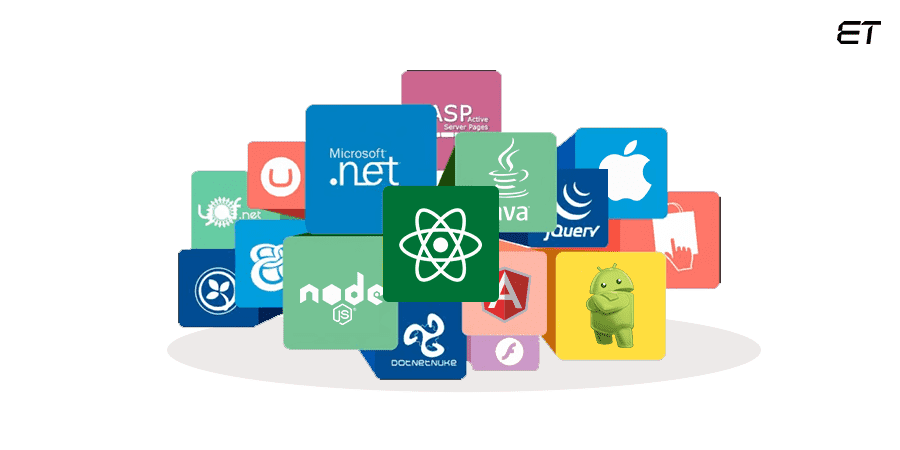Today, the healthcare sector has a phenomenal opportunity to serve patients by providing top-notch services. They can enhance their output by choosing digital offerings like EHR software development.
If you work in this domain, it has become a necessity to adopt an EHR system. In fact, 88% of US-based physicians have an electronic health record software in place.
Perhaps this statistic is enough to portray the significance of partnering with an EHR software development company. The main aspects of developing such software are scalability and security. So, if you plan to build or refine your EHR software, refer to this guide.
It contains all the critical details on EHR software for businesses and professionals in the healthcare domain.
What is EHR Software Development?
EHR stands for ‘electronic health record.’ An EHR system is a digital platform that stores a patient’s medical history. Consider it to be a secure online version of those old-fashioned paper charts used by doctors.
You must be aware that the top IT companies have developers who build tailor-made software for various businesses.
EHR software development is a similar process that caters to the healthcare industry.
In this process, a team of professionals creates EHR systems for the following uses:
- Recording patient’s medical history
- Storing vital health-related information
- Improving efficiency and care quality for healthcare professionals
Overall, an EHR software development company assigns suitable developers and designers to create comprehensive software.
The Key Components or Features of an EHR Software
You must be wondering about the main inclusions in EHR software. If the answer is yes, this section can prove helpful.
Here are some of the common and vital elements of an electronic health record system.
1. Clinical Data Repository
Consider this component as the central library of the software.
This repository stores all the essential details about a patient’s health for easy retrieval and analysis.
Here are the main functions of this clinical data repository:
- Data Consolidation: The repository gathers information from various sources within the EHR system, such as patient demographics, diagnoses, medications, allergies, lab results, radiology reports, imaging scans, and physician notes
- Unified View: This data provides a comprehensive picture of a patient’s health history, allowing healthcare providers to make appropriate treatment decisions
- Secure Storage: The repository adheres to strict security protocols to safeguard sensitive patient information. Compliance with HIPAA and other healthcare privacy regulations is necessary
A clinical data repository has three significant datasets. The following table offers the main insights into these segments.
| Type of Data | Inclusions |
| Structured | Demographics (date of birth, address), medications, lab results (numerical values with units), and vital signs (blood pressure, temperature) |
| Unstructured | Physician notes, radiology reports, and narrative summaries |
| Imaging | X-rays, MRIs, computed tomography scans, and other medical images |
All in all, this central hub serves as the pivot for the entire system. Hence, developers utilize the best frameworks to build this repository during EHR software development.

Want to know how our IoT-based solution helped a client achieve a 43% increase in patient footfall? Read this case study for all the details.
2. Patient Management
In EHR software development, patient management refers to the functions that streamline the administrative tasks and interactions between a healthcare provider and their patients.
Consider these features as crucial offerings for the patients from start to end.
Here are the key aspects that fall under patient management:
- New Patient Registration: This module allows for the efficient registration of new patients in the system.
- Appointment Scheduling and Management: This feature enables both patients and providers to schedule and manage appointments
- Check-in/Out Process: This module aims to streamline the patient intake and discharge process, making it faster and more efficient
- Referral Management: This feature simplifies the referral process when a patient needs to see a specialist within or outside the healthcare network
Overall, patient management in EHR software development saves healthcare providers time. Such features also enhance patients’ experiences.
3. Clinical Decision Support System (CDSS)
Get this — EHR software development is a bit complex as it involves creating various sub-elements. The CDSS is one such vital component.
Basically, CDSS is a technology that developers integrate into an electronic health record system. It has the following core functionalities:
- Data Analysis: CDSS pulls patient data from various sources within the EHR, including demographics, medical history, medications, allergies, lab results, and vital signs
- Knowledge-based Support: The system has a vast knowledge base containing medical guidelines, best practices, and clinical research findings
- Real-time Recommendations: Based on the analysis of patient data and the knowledge base, CDSS generates real-time recommendations for clinicians
Notably, the insights from CDSS can help physicians improve their diagnosis accuracy. Also, a well-developed system can reduce medical errors and suggest relevant treatment plans. So, ensure you choose a dependable EHR software development company to create this type of platform.


4. Reporting and Analytics
EHR software development involves creating various tools. Some of these tools help healthcare providers analyze data to improve patient care and service.
Here are some of the main aspects that fall under this category:
- Data Extraction: The system can extract specific data points from patient records based on pre-defined criteria. This data can include demographics, diagnoses, medications, lab results, or more
- Report Generation: You can extract the data into reports that present the information in a clear and concise way
- Predictive Analytics: Some systems can leverage advanced analytics to predict potential health risks for patients based on their medical history
- Benchmarking: Users can leverage analytics to compare performance against national or regional benchmarks for specific quality measures
So, this fourth component of an EHR system proves beneficial on the analytical front. Ensure you understand how to utilize this data to provide the best possible service.
How to Build an EHR System?
By reading the details under the key components section, you must have realized the importance of EHR systems.
So, what’s the next thought in your mind?
You must consider choosing an EHR software development company to build custom software for your organization. Before shortlisting the best options, it will prove advantageous to understand how a good IT firm approaches EHR software development.
In this section, we will explain all the steps in brief.
Need Assessment
The best companies gather insights through interviews with various stakeholders within the healthcare organization. These interviews can cover the following profiles:
- IT staff
- Physicians
- Nurses
- Admins
- Patients (in some cases)
They understand the workflow, existing challenges, and desired functions of the system. This stage allows them to better plan EHR software development.
Planning and Ideation
This stage focuses on structuring the EHR software development process. Planning includes the following steps:
- Definition of the project’s scope
- Breakdown of activities
- Resource allocation
- Tech stack selection
- Risk management
- Budgeting
Ideation happens before planning when the EHR software development company conducts stakeholder meetings. This stage also includes competitive analysis and techniques like mind mapping.
Main EHR Software Development
This stage is the backbone of developing your EHR system.
The dedicated developers in a company adhere to strict and secure coding practices. Here are the main stages of developing this platform:
- Front-end Development: Creation of ergonomic interfaces for patients and healthcare professionals
- Back-end Development: Building functionalities for data storage, integrations, access control, and more·
- App Development: Developing smartphone apps that work on prominent platforms like Android and iOS
A reliable EHR software development company will assign these activities to experienced programmers.
Regulatory Compliance
The software development company must strictly comply with HIPAA (Health Insurance Portability and Accountability Act).
This step is necessary to protect patient data and ensure privacy in the EHR system. Features like access controls, audit logs, and encryption become crucial for this purpose.
Here are some pointers that you can consider to understand how an EHR software development company ensures these compliances:
- Security Measures: Data encryption at rest and in transit, access controls with user authentication and role-based permissions, and regular security audits are the main aspects of the SDLC
- Audit Trails and Logging: The EHR system maintains a comprehensive audit trail that tracks all access attempts, data modifications, and user activity
- Risk Management: A comprehensive risk management program identifies and mitigates potential security and privacy risks associated with the EHR system
All in all, you should always discuss these parameters when choosing a vendor for EHR software development.
Training and Implementation
The best EHR software development companies do not just deliver the digital product. They also organize training programs or online workshops for healthcare providers.
In addition, they deploy various training methods to cater to different learning styles. These approaches may include instructor-led classroom sessions, online tutorials, video demonstrations, and hands-on practice sessions with the EHR system.
Furthermore, ongoing support resources, such as user guides, FAQs, and access to help desks, are readily available to address user questions and challenges as they arise.



Want to get in touch with developers who have experience in healthcare projects? Contact us and connect with vetted programmers at our EHR software development company.
Types of EHR Systems
Now, depending on your organization, you can request a suitable type of EHR software. The following table provides a quick glimpse of the main EHR system types.
| Type | Explanation |
| On-premise | Installed on your healthcare organization’s servers. This type gives you more control over the data and security |
| Cloud-based | Hosted by the IT vendor and accessed through the internet. This type is a more affordable option for smaller healthcare organizations and eliminates the need for on-site IT staff |
| Ambulatory | Designed for outpatient care, such as doctors, offices, and clinics |
| Integrated | Combine electronic health records with other healthcare IT systems, such as practice management software, costing or billing software, and lab results systems. |
Best Technologies for EHR Software Development
The following factors influence your selection of the tech stack for developing EHR software:
- Desired functions
- Scalability requirements
- Security considerations
- Budget constraints
An experienced EHR software development company will constantly assess these factors before suggesting an apt tech stack.
However, some names are prominent options for this type of software development. Take a look at these choices:
- Front-end Development: React.js, Angular, or Vue.js
- Back-end Development: Python or Java
- Databases: MySQL, MongoDB, or PostgreSQL
- Cloud platforms: Microsoft Azure, Google Cloud Platform, or AWS
- Mobile frameworks: React Native or Flutter
It is vital to realize that these names are not final options in the particular segment. A company can suggest alternatives to develop your EHR software.
Still, most programmers prefer these technologies for technical purposes.
The Benefits of EHR Systems
Electronic health record systems offer a wide range of advantages for both healthcare providers and patients. Here are some of the key benefits:
- Improved Quality of Care: EHRs provide doctors with a comprehensive view of a patient’s medical history, which can lead to better-informed diagnoses and treatment plans
- Increased Efficiency: EHR systems streamline workflows by automating tasks like order entry, prescription management, and appointment scheduling
- Enhanced Communication and Collaboration: Secure messaging and patient portals within EHR systems allow for smoother communication between patients, doctors, and other healthcare professionals involved in a patient’s care
- Reduced Errors: EHRs can help minimize medication errors by automatically checking for allergies and interactions
- Improved Patient Engagement: Patient portals within EHR systems empower patients to take a more active role in their healthcare by allowing them to view their medical records, track their health data, and communicate with their providers
- Enhanced Data Security: EHR systems typically offer robust security features to protect patient data privacy
- Public Health Reporting: EHR data can be used to track outbreaks of infectious diseases and monitor the effectiveness of public health initiatives
Overall, EHR systems are a powerful tool for transforming healthcare delivery. They can improve the quality and efficiency of care, empower patients, and contribute to better population health outcomes.
In a Nutshell
EHR software development is a complex yet crucial effort that shapes the future of the healthcare industry. Developers can create robust EHR systems by understanding healthcare providers’ needs, prioritizing security and compliance, and leveraging the power of cutting-edge technologies.
A useful EHR platform should help offer better patient care, streamline workflows, and unlock valuable insights from patient data. As healthcare evolves, EHR software development will be pivotal in fostering a more efficient, data-driven, patient-centered healthcare ecosystem. Notably, continuous innovation, user feedback, and ongoing security updates are crucial to ensuring the utility of EHR systems.
If you want to develop an EHR system for your organization, please contact us today!
Frequently Asked Questions
1. Is EMR similar to EHR?
EMR stands for electronic medical record. On the contrary, EHR is the abbreviation for electronic health record. An EMR is a digital version or record of a patient’s medical chart from a single healthcare provider. An EHR aggregates data from multiple sources, providing a more detailed picture of a patient’s health.
2. Which is the most popular EHR software or system?
EPIC, Oracle Cerner, Capterra, NextGen, and Valant are well-known EHR systems. These platforms have distinct pros and cons, making them suitable for various patients and healthcare providers.
3. Why should I use an electronic health record software?
You should use EHR software to improve patient care, increase efficiency, access medical records easily, and improve communication. These advantages make EHR software development a vital service for modern medical organizations.
4. How long does it take to develop an electronic health record system?
The EHR software development timeline can vary due to complexity, customization, development methodology, team size, and compliance requirements. So, the exact duration can vary from project to project. Still, you can consider a period of six months to two years (or more).
5. How much does it cost to develop an EHR?
There’s no one-size-fits-all answer for this question. The cost depends on features, team size, location, and platform. So, the project complexity and nature of association influences the main budget.
6. What are the things to consider when building an EHR?
You should consider the budget, tech stack, features, scalability, usability, and integration before building an EHR system.
7. What challenges can arise while developing an EHR software?
Complexity, regulations, and interoperability are some common challenges that arise during EHR software development. In addition, you should also consider aspects like data security and user adoption before launching the system.
Project Delivery Head
Nitin has over 20 years of IT experience and 3+ years of experience in on-site work in Arizona, USA. In all these years, he has held the positions of delivery manager, module lead, and senior consultant. Expert in advocating product life cycle phases while using self-motivational skills and problem-solving abilities. He works on the principle of “Always Deliver More than Expected.”
